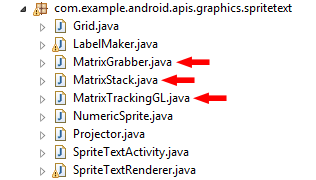Unity3D: JavaScript vs. C# – Part 3
Posted by Dimitri | Dec 4th, 2010 | Filed under Programming
This is the third part of a series that show some of the differences between JavaScript and C# when writing scripts for Unity3D game engine. I suggest that you read the first and second post of the series to better understand what is going on here.
In this third part, I will point out some differences between JavaScript and C# by writing a script that makes a GameObject move forward. So, let’s start with the programming language that will take the smallest number of lines to make a GameObject move, JavaScript: Continue reading: “Unity3D: JavaScript vs. C# – Part 3”
Retro Review: Shinobi (SMS)
Posted by Dimitri | Dec 1st, 2010 | Filed under Featured, Retro Games
Shinobi is an action game released by Sega in 1987. In this game, the player has to control a ninja called Joe Musashi, which receives a mission to rescue children hold as hostage by the ‘Ring Five’ terrorist organization. The game was originally released in the Arcades, and later ported to Sega’s 8 bit home console back in 1988.
The Master System version is much more slower and the action more paced than it’s arcade counterpart, but that doesn’t make the game any easier. In fact, the difficulty is the first thing one notices while playing Shinobi. The learning curve is steep and the game is ruthless: your timing has to be almost perfect to defeat the enemies on the screen or just avoid getting hit by bullets, boomerangs and other enemy attacks. The Bonus Stages are also very hard but can give Joe a new spell to aid him. It is a hard game even for the 1988 standards.
Continue reading: “Retro Review: Shinobi (SMS)”
Unity3D: JavaScript vs. C# – Part 2
Posted by Dimitri | Nov 29th, 2010 | Filed under Programming
Part 2 of a post series that tries to explain the differences between JavaScript and C# when programming for the Unity3D game engine. It is recommended that you read part one before continuing. In this post, I will explain how to access other GameObjects and Components. This is one of he most common tasks that a programmer has to perform when writing scripts for Unity3D game engine. So, let’s start by assuming that we want to retrieve a GameObject named ‘Pawn’ which is at the root of the scene and has a script called ‘PawnMover’ attached to it.
Getting the GameObject using JavaScript is simple. All you have to do is to call the GameObject class Find() static method and pass the name of the other GameObject we want as a parameter: Continue reading: “Unity3D: JavaScript vs. C# – Part 2”
Android OpenGL: Get the ModelView Matrix on Cupcake (1.5)
Posted by Dimitri | Nov 25th, 2010 | Filed under Programming
One of the most annoying things when developing apps with OpenGL in Android 1.5, is the fact that there’s no access to the ModelView or the Projection matrices. It is not possible to call the glGetFloatv function because it wasn’t implemented until OpenGL ES 1.1, which isn’t available in the Cupcake versions. So, how to get the ModelView matrix on Android 1.5? The first thing you are going to do is grab these three classes: MatrixGrabber, MatrixStack and MatrixTrackingGL. All of them are inside the API demos, under the package com.example.android.apis.graphics.spritetext.

You're going to need these.
Continue reading: “Android OpenGL: Get the ModelView Matrix on Cupcake (1.5)”
41 Post, now on Twitter and Facebook!
Posted by Dimitri | Nov 19th, 2010 | Filed under Featured, Site Updates
See these icons on the right side of the navigation bar? These are the links to the 41 Post Twitter and Facebook accounts. This way, it will be possible to connect with the fellow reader, so you will have a better idea when there’s something new coming.
There is also a Like button and a Tweet button at the bottom, so use them if you want to share any post with others. As usual, don’t forget to leave a comment here on this website.
I hope this makes it easier to follow and interact with 41 Post.
So please, follow 41 Post on Twitter and ‘like’ the 41 Post page on Facebook.




